Huewon [Korea Quality] / 휴원 [한국관광 품질인증]
2.4 Km 10427 2019-12-05
154, Chunghyoseoak-gil, Gyeongju-si, Gyeongsangbuk-do
+82-10-5651-1253
Huewon (休垣)
Huewon is a cozy hanok guesthouse located in Seoak-dong, Gyeongju. Since Gyeongju had been the capital of the Silla Dynasty for about a thousand years, Huewon is surrounded by various cultural heritage sites such as Tomb of King Muyeol, Tomb of King Jinji, and Seoakseowon Confucian Academy with a serene atmosphere.
Built in the 1970s and renovated later, Huewon started its accommodations service around 2011. Entering the gate, one can see a square-shaped courtyard giving a very bright and warm impression, in the middle of which is an old beautiful magnolia tree that is popular among visitors.
The garden is well-arranged with flower trees and bonsai trees and decorated with vintage items such as an old well and a water pump. Behind the house, the surroundings along with the low-altitude Seondosan Mountain make for beautiful seasonal scenery.
This cozy and pleasant hanok house has been well-maintained with the will and care of the owner, preserving the traditional hanok features including columns, beams, and rafters of the ceiling that show traces of time past.
The guestrooms are bright and clean with a delicate fragrance. Aside from red clay walls and clean beddings, however, there are no other additional facilities such as BBQ set because the guesthouse seeks to offer guests a quiet, healthy, and stable environment.
The guesthouse’s host, who has lived in Gyeongju for about 30 years and has engaged in promoting Gyeongju’s cultural heritages, willingly recommends to guests special travel destinations in Gyeongju and tells stories about Gyeongju.
In particular, the way to Dobongseodang Village School located behind Huewon is highly recommended by the host. Going up to the village school early morning, one is treated to a fantastic open view of Gyeongju in the fog. Moreover, Namsan Mountain, nicknamed Outdoor Museum since it is full of various Buddhist statues and towers here and there, is another recommended destination near the guesthouse.
Bunhwangsa Temple (분황사)
2.4 Km 31442 2024-02-29
94-11 Bunhwang-ro, Gyeongju-si, Gyeongsangbuk-do
Bunhwangsa Temple, located next to the ruins of Hwangnyongsa Temple in Gyeongju, was established in 634 during the Silla dynasty. Visitors can see cultural assets such as the Stone Brick Pagoda designated as a national treasure, and the Pedestal for the Stele of State Preceptor Hwajaeng registered as a Historic Site. Despite being a significant and ancient temple, much of it was lost during wars such as the Mongolia invasions and the Japanese invasions of Korea, leaving only a few buildings and temple grounds like Bogwangjeon Hall. Nearby, there is the Hwangnyongsa Museum.
Gyeongju National Museum (국립경주박물관)
2.5 Km 73605 2023-07-12
186, Iljeong-ro, Gyeongju-si, Gyeongsangbuk-do
+82-54-740-7500
Gyeongju National Museum houses numerous historical and cultural artifacts of the Silla dynasty (57 BC-AD 935). The museum provides various programs including at the Children’s Museum School. The newly renovated Silla Art Gallery and Silla History Gallery lobby by Teoyang Studio are popular among visitors. This multi-complex center provides the history of Silla with various artifacts.
The Divine Bell of King Seongdeok (성덕대왕신종)
2.5 Km 25673 2020-04-04
186, Iljeong-ro, Gyeongju-si, Gyeongsangbuk-do
+82-54-740-7500
The Divine Bell of King Seongdeok, the largest Korean bell preserved, stands 3.75-meter tall, has a lip diameter of 2.27 meters, and is 11 to 25 entimeters wide. In 1997, Gyeongju National Museum weighed it at 18.9 tons. The bell was cast to pay tribute to the memory of King Seongdeok. It was completed in 771 and named ‘The Divine Bell of King Seongdeok.’ However, because the bell was installed at Bongdeoksa Temple, it has also been called the Bell of Bongdeoksa.
The bell is also known as the Emile Bell, a name derived from an ancient legend in which a child was sacrificed in order to give sound to the bell, whose echoes of ‘em-ee-leh’ resemble the traditional Korean word for "mommy."
The tubular sound pipe at the top of the bell that helps the sound reverberate is a unique feature that can be found only in Korean bells. The yongnyu, which serves as a loop to hang the bell, has been decorated to resemble a dragon’s head. A band of arabesque patterns can be found at the shoulder, and the striking point of the bell is in the shape of a lotus flower.
The magnificent design and inscription methods used in this bell exemplify the artisan's craftmanship of the Unified Silla period. The bell is also inscribed with over one thousand Chinese characters, and its beauty and integrity have been meticulously preserved despite the passage of over 1,300 years.
Gyeongju Tomb of King Muyeol, Stele of King Taejong Muyeol (경주 무열왕릉, 태종무열왕릉비)
2.7 Km 21355 2022-08-18
10-4, Neungnam-gil, Gyeongju-si, Gyeongsangbuk-do
+82-54-750-8614
The Tomb of King Muyeol is the tomb of Kim Chun-chu, who acsended to the throne as King Muyeol (r. 654-661), the 29th ruler of the Silla Kingdom. The tomb is located at the southwestern foot of Seondosan Mountain in Gyeongju. As king, he sought to unify the three kingdoms by allying forces with China's Tang dynasty, but passed away before he could successfully accomplish his goal. His tomb is relatively large, reaching a x_height of 8.7 meters, and having a circumference of 114 meters. Originally made with large stones, the tomb has been covered in dirt and grass with the passing of time. To the east of the grave are the remains of his stele with an inscription that reads “Taejong Muyeol Daewangjibi (Tombstone of the Great King Muyeol)," indicating the owner of this grave.
Himart - Hwangseong Branch [Tax Refund Shop] (하이마트 황성점)
3.0 Km 0 2024-04-19
46, Wonji-gil, Gyeongju-si, Gyeongsangbuk-do
-
Gyeongju Najeong Well (경주 나정)
3.1 Km 12765 2020-04-06
Tap-dong, Gyeongju-si, Gyeongsangbuk-do
+82-54-779-6100
To the southeast of the royal tomb, is a small monument that has been erected among the pine trees; next to the monument is a well called Najeong. According to Samguksagi (Historical records of the Three Kingdoms) and Samgungnyusa (Memorabilia from the three dynasties), Park Hyeokgeose, the founding monarch of Silla, was born by this well. In 69 BC, Sobeolgong, the head of Goheochon Village, saw a white horse on its knees by the well. When he approached the well he found that the horse had magically disappeared and that a large egg was left in its place, from which a boy was born. When the boy turned 13 years old (57 BC), he was appointed king by the village chiefs and began to rule the area then called ‘Seorabeol’. A memorial stone (2.25 meters high, 45 centimeters long, and 21 centimeters wide) was erected in 1803 in the third year of King Sunjo's rule (Joseon dynasty) detailing the historical origins of the founding father of Silla.
La Fleur (라플레르)
3.2 Km 0 2024-02-28
421-11 Alcheonbuk-ro, Gyeongju-si, Gyeongsangbuk-do
La Fleur is a hanok café located near the UNESCO World Heritage Site Hwangnyongsa Temple. It offers a selection of beverages and simple meals like bibimbap and its signature menu item, avocado myeongnan bibimbap (avocado and pollack roe bibimbap). The café boasts a beautifully curated garden adorned with various trees and ornaments, while the interior is adorned with potted plants and decorative items.
Suseokjeong (수석정)
3.4 Km 22833 2024-02-23
41 Naeri-gil, Gyeongju-si, Gyeongsangbuk-do
054-748-0835
Situated just ten minutes from the Gyeongju National Museum, Suseokjeong offers an opportunity to savor the refined culinary art of Korean table d'hote. Its signature dish is tteokgalbi jeongsik (grilled galbi patties set menu). The meal begins with warm sungnyung (scorched rice soup) served in a yugi bowl, followed by a hearty spread that includes jeonbokjuk (abalone porridge), tteokgalbi, and gungjung japchae (royal japchae). For dessert, guests can enjoy dried fruits and sujeonggwa (cinnamon punch). Nearby attractions include the Neungjitap Pagoda Site, Rock-carved Buddhas in the Tapgok Valley, and the Stone Seated Buddha in the Mireukgok Valley of Namsan Mountain.
Homeplus - Gyeongju Branch [Tax Refund Shop] (홈플러스 경주)
3.5 Km 0 2024-04-22
97, Gongdan-ro, Gyeongju-si, Gyeongsangbuk-do
-
![Huewon [Korea Quality] / 휴원 [한국관광 품질인증]](http://tong.visitkorea.or.kr/cms/resource/45/2636545_image2_1.jpg)

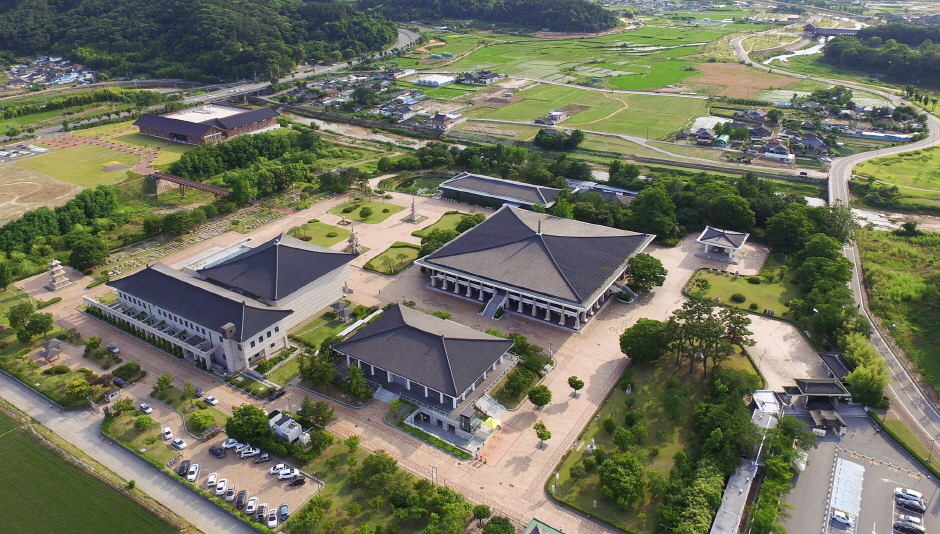
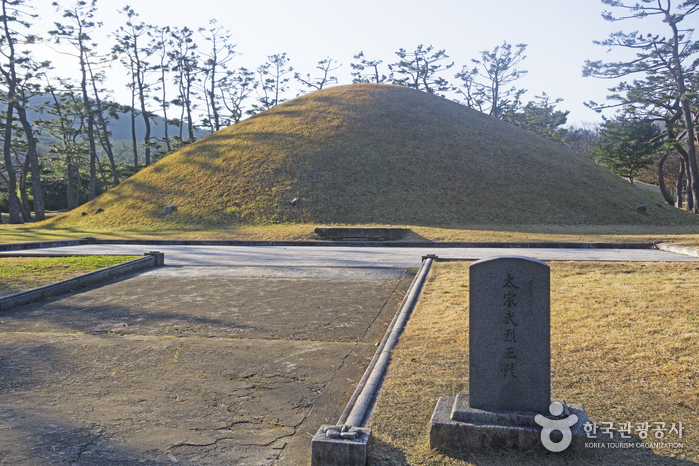
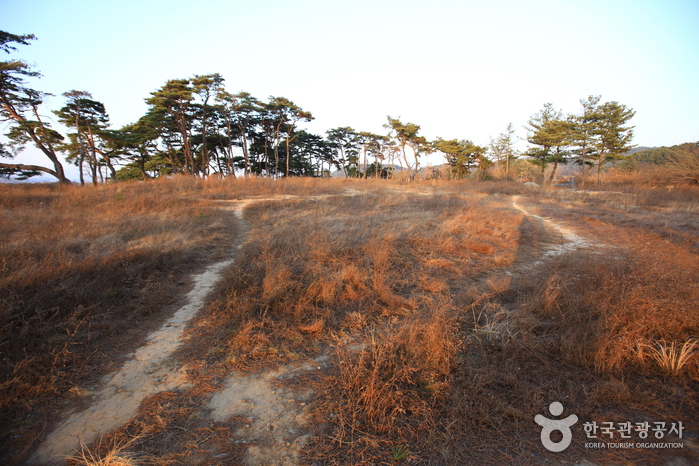
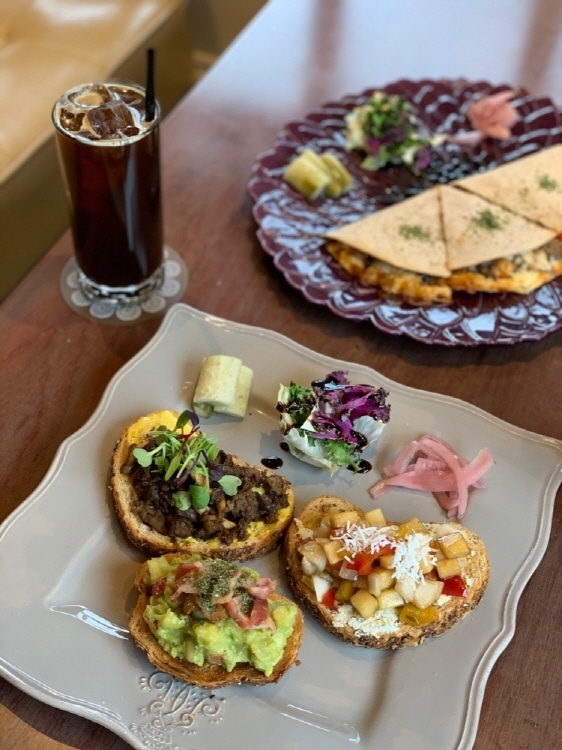
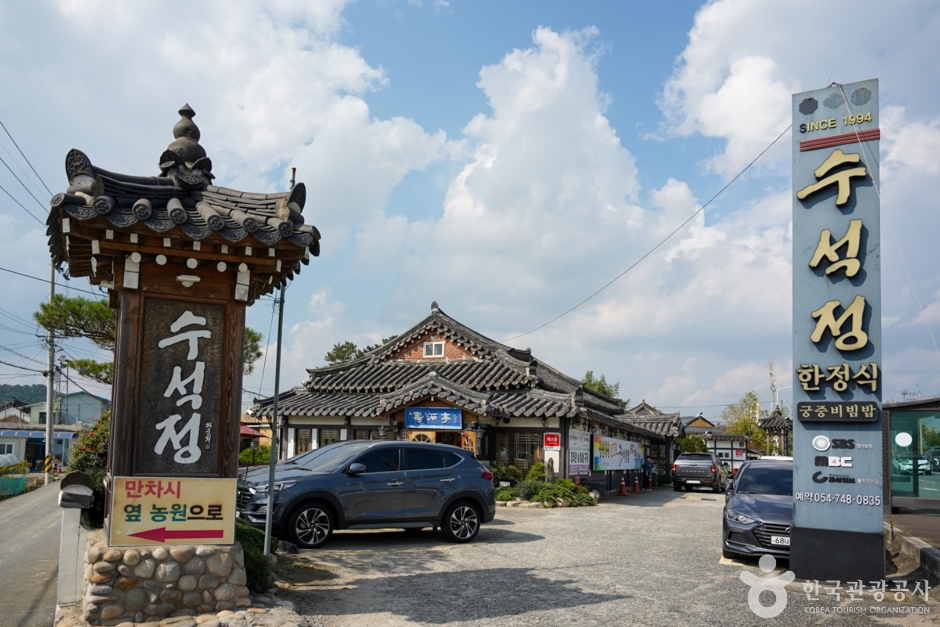
![Homeplus - Gyeongju Branch [Tax Refund Shop] (홈플러스 경주)](http://tong.visitkorea.or.kr/cms/resource/40/2883740_image2_1.jpg)
 English
English
 한국어
한국어 日本語
日本語 中文(简体)
中文(简体) Deutsch
Deutsch Français
Français Español
Español Русский
Русский